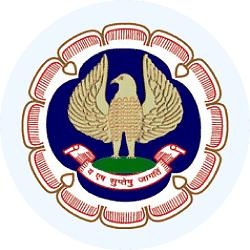CA Foundation Exam > CA Foundation Notes > Business Economics for CA Foundation > Key Notes: Open Economy Macroeconomics
Key Notes: Open Economy Macroeconomics | Business Economics for CA Foundation PDF Download
- Open Economy:
It is one in which trading is done with other nations in goods and service and most often in financial assets. - Balance of Payment:
It is a systematic record of all economic transaction between the residents of a country, and the rest of the world during a year. - Current Account:
Transactions relating to trade in goods and services and transfer payment constitute the current account.
Components of Current Account
(i) Visible Trade
(ii) Invisible Trade
(iii) Transfer Payment - Capital Account:
It represents international capital transactions which include sale and purchase of assets such as bonds equities, lands , loans, bank account etc.
Components of capital account
(i) Foreign Investment
(ii) Loans
(iii) Banking Capital Transaction. - Balance of Trade :
It means the systematic records of visible imports and exports in a given year.
BOP = Visible Exports — Visible Imports - Autonomous Transaction:
It refers to those international economic transaction which are taken with the motive of profit. - Accommodating Items:
All the items related to the monetary transfers correcting balance of payments dis equilibrium are accommodating items. - Foreign Exchange Market:
The market in which forei.cn currencies are bought and sold is called the foreign exchange market. - Foreign Exchange Rate:
The rate at which one currency i exchanged for other is known as the rate of exchanges n foreign exchange rate. - Fixed Exchanges Rate:
System It refers to the rate ni exchange fixed by the government.
It has two important variants
(i) Gold standard system of exchanges rate.
(ii) Bretton woods system of exchanges rate. - Determination of Foreign Exchange Rate:
It is determined by the forces of supply and demand in the foreign exchanges market. - Devaluation:
It is the fall in the value of domestic currency in relation to foreign currency as planned by the government In a situation exchanges rate is fixed by government. - Depreciation:
It is the fall in the value of domestic currency in relation to foreign currency in a situation when exchange rate is determined by the forces of demand and supply in tin international money market. - Managed Floating:
It is a system that allows adjustments in exchanges rate according to set of rules and regulation which are officially declared in the foreign exchanges market.
The document Key Notes: Open Economy Macroeconomics | Business Economics for CA Foundation is a part of the CA Foundation Course Business Economics for CA Foundation.
All you need of CA Foundation at this link: CA Foundation
|
86 videos|200 docs|58 tests
|
FAQs on Key Notes: Open Economy Macroeconomics - Business Economics for CA Foundation
| 1. What is an open economy in macroeconomics? |  |
An open economy in macroeconomics refers to an economy that engages in international trade and has economic interactions with other countries. It allows the flow of goods, services, capital, and labor across its borders.
| 2. How does an open economy differ from a closed economy? |  |
An open economy differs from a closed economy in terms of international trade. In an open economy, there is a free flow of goods, services, capital, and labor between countries, while in a closed economy, there are restrictions on these flows, and the economy is self-sufficient.
| 3. What are the benefits of an open economy? |  |
An open economy brings several benefits, including increased access to a wider range of goods and services from other countries, which can lead to greater consumer choice and lower prices. It also allows for specialization and comparative advantage, leading to increased efficiency and economic growth.
| 4. What are the potential drawbacks of an open economy? |  |
While an open economy offers many advantages, it also has potential drawbacks. It can make domestic industries vulnerable to international competition, leading to job losses in some sectors. It may also result in volatility in exchange rates and exposure to global economic shocks.
| 5. How does an open economy impact the balance of payments? |  |
An open economy affects the balance of payments, which is a record of all economic transactions between a country and the rest of the world. It includes the current account, which measures trade in goods and services, and the capital account, which tracks financial flows. An open economy can influence the balance of payments through changes in exports, imports, foreign investment, and exchange rates.
Related Searches
















